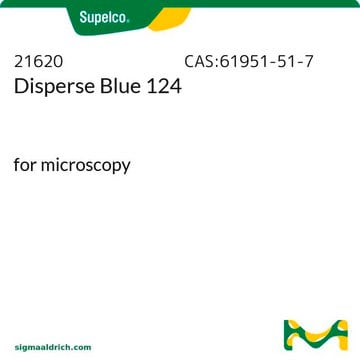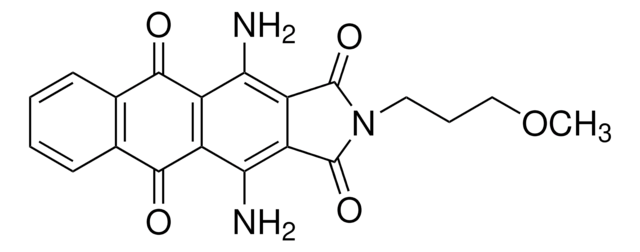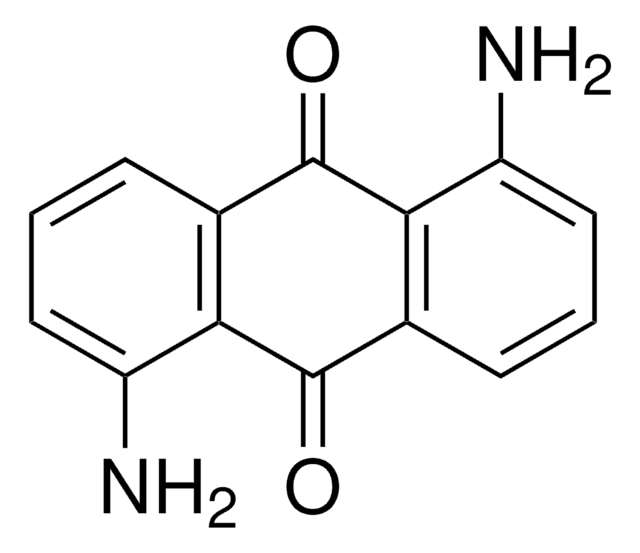Disperse Blue 1 is a synthetic dye primarily used for industrial purposes and has not been documented as a biological stain. The manufacture of Disperse Blue 2 involves acylating 1,5 diaminoanthraquinone with oxalic acid, nitrating in mixed acids, hydrolyzing, and reducing to produce 1,4,5,8 tetraaminoanthraquinone.
215643
Disperse Blue 1
Dye content 30 %
Synonym(s):
1,4,5,8-Tetraaminoanthraquinone
Select a Size
Select a Size
About This Item
Recommended Products
form
powder
composition
Dye content, 30%
mp
332 °C
solubility
1 M NH4OH: 10 mg/mL, opaque, blue
λmax
607 nm
application(s)
diagnostic assay manufacturing
hematology
histology
storage temp.
room temp
SMILES string
Nc1ccc(N)c2C(=O)c3c(N)ccc(N)c3C(=O)c12
InChI
1S/C14H12N4O2/c15-5-1-2-6(16)10-9(5)13(19)11-7(17)3-4-8(18)12(11)14(10)20/h1-4H,15-18H2
InChI key
JSFUMBWFPQSADC-UHFFFAOYSA-N
Looking for similar products? Visit Product Comparison Guide
General description
Signal Word
Danger
Hazard Statements
Precautionary Statements
Hazard Classifications
Carc. 1B - Eye Dam. 1 - Skin Irrit. 2 - Skin Sens. 1
Storage Class Code
6.1C - Combustible acute toxic Cat.3 / toxic compounds or compounds which causing chronic effects
WGK
WGK 3
Flash Point(F)
Not applicable
Flash Point(C)
Not applicable
Personal Protective Equipment
Regulatory Listings
Regulatory Listings are mainly provided for chemical products. Only limited information can be provided here for non-chemical products. No entry means none of the components are listed. It is the user’s obligation to ensure the safe and legal use of the product.
EU REACH Annex XVII (Restriction List)
Choose from one of the most recent versions:
Certificates of Analysis (COA)
Don't see the Right Version?
If you require a particular version, you can look up a specific certificate by the Lot or Batch number.
Already Own This Product?
Find documentation for the products that you have recently purchased in the Document Library.
Customers Also Viewed
-
Is item 215643-5G synthetic?
1 answer-
Helpful?
-
Active Filters
Our team of scientists has experience in all areas of research including Life Science, Material Science, Chemical Synthesis, Chromatography, Analytical and many others.
Contact Technical Service












